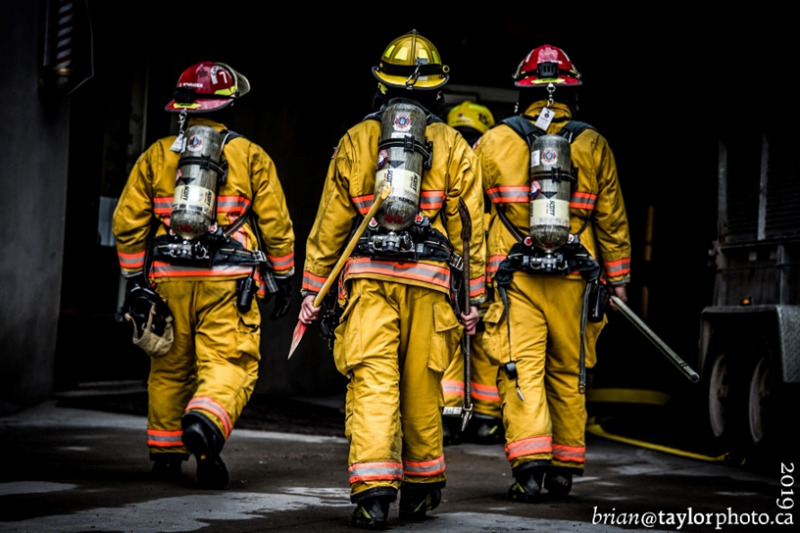
What is the problem?
For public safety personnel (PSP) to be able to carry out the tasks and responsibilities of their duties and maintain their mental wellness, the awareness of critical incident exposure is important. If left unaddressed, these issues can become debilitating and deeply impact the lives of PSP [1,2]. Various non-clinical strategies and interventions have been developed for the PSP community to address and mitigate the impacts of post-traumatic stress. However, there is no consensus on the most appropriate or effective strategy or intervention.
How did the team study the problem?
A literature review was conducted to explore debates and critiques of the following strategies and interventions: critical incident stress management and critical incident stress debriefings, psychological first aid, peer support programs, and resilience training and psychoeducation.
What did the team find?
It was found that there are substantial concerns regarding the overreliance of CISD and its effectiveness in the prevention of post-traumatic stress disorder (PTSD). Psychological first aid (PFA), peer support programs, resiliency training and psychoeducation are all interventions and strategies being used to address several issues in relation to trauma and mental health among PSP. One of the distinguishing theoretical differences between the CISD and the other strategies are the underlying goals of preventing the onset of PTSD. While the underlying theory behind CISD is to prevent the onset of PTSD; PFA, peer support programs, resiliency training, and psychoeducation strategies seem to encompass a more holistic approach to dealing with trauma than a disorder-specific outcome. It is evident that exposure to trauma among PSP can result in many different types of mental health injuries, not just PTSD [3,4,5,6,7]. There is a need to shift the culture among PSP and researchers beyond focusing solely on PTSD as a result from trauma exposure. Moving from disorder-specific prevention outcomes to broader psychosocial outcomes of stigma reduction, increase in help-seeking behavior, and post-traumatic growth might be more appropriate, comprehensive goals of these types of non-clinical/preventive interventions. A fundamental shift in thoughts and theory of post-traumatic exposure and preventative methods beyond disorder-specific outcomes should be explored in future research. In exploring the dominant non-clinical interventions and strategies, it was found that any program by itself is not sufficient to address trauma among PSP. Strategies and interventions must be used as a comprehensive set of services rather than as stand-alone interventions.
How can this research be used?
The results of this literature review can help PSP leaders in the decision-making process for implementing mental health interventions and strategies within their organizations.
Cautions
This literature review focused on a small number of interventions and strategies used to address trauma among PSP. While some research has been conducted on these strategies and interventions, there is still a substantial lack of research on their appropriateness and effectiveness in addressing post-traumatic stress.
Reference: This research was conducted as part of Robin Campbell’s (PhD Candidate, Dalhousie University) comprehensive examinations for her PhD in Health.
Cited Sources:
1. Brazil, A. (2017). Exploring critical incidents and postexposure management in a volunteer fire service. Journal of Aggression, Maltreatment & Trauma, 26(3), 244-257. https://doi.org/10.1080/10926771.2016.1264529
2. Bryant, R.A., & Harvey, A.G. (1996). Posttraumatic stress reactions in volunteer firefighters. Journal of Traumatic Stress, 91(1), 51-62. http://dx.doi.org/10.1002/jts.
3. Adams, B.D., Davis, S.A., Brown, A.L., Filardo, E., & Thomson, M.H. (2013). Post traumatic stress disorder (PTSD) in emergency responders scoping study: Literature review. Report prepared for Defence Research and Development Canada. Retrieved from http://cradpdf.drdc-rddc.gc.ca/PDFS/unc216/p800202_A1b.pdf
4. Skogstad, M., Skorstad, M., Lie, A., Conradi, H.S., Heir, T., & Weisaeth, L. (2013). Work-related post-traumatic stress disorder. Occupational Medicine, 63(1), 175-182. https://academic.oup.com/occmed/article/63/3/175/1413569
5. Carleton, R.N., Afifi, T.O., Turner, S., Taillieu, T., Duranceau, S., LeBouthillier, D.M.,…& Asmundson, G.J.G. (2018). Mental disorder symptoms among public safety personnel in Canada. The Canadian Journal of Psychiatry, 63(1), 55-64. http://doi.org/10.1177/0706743717723825
6. Corneil, W., Beaton, R., Murphy, S., Johnson, C., & Pi, K. (1999). Exposure to traumatic incidents and prevalence of posttraumatic stress symptomatology in urban firefighters in two countries. Journal of Occupational Health Psychology, 4(2), 131-141.
7. Oliphant, R., (Chair). (2016). Healthy minds, safe communities: Supporting our public safety officers through a national strategy for operational stress injuries. Canada: Standing Committee on Public Safety and National Security. Retrieved from http://www.parl.gc.ca/HousePublications/Publication.aspx?DocId=8457704&Language=E
8. Sattler, D.N., Boyd, B., & Kirsch, J. (2014). Trauma-exposed firefighters: Relationships among posttraumatic growth, posttraumatic stress, resource availability, coping, and critical incident stress debriefing experience. Stress and Health, 30, 356-365. https://doi-org.ezproxy.library.dal.ca/10.1002/smi.2608
Research summaries are written by researchers and the contents are the responsibility of the author.
